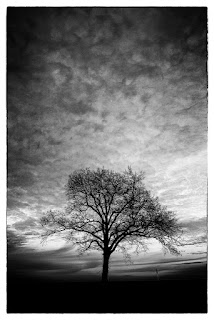
They can be quite complex in nature, very subtle in their beauty, and even bold and dynamic...Landscapes. Sometimes as a photographer I try to go beyond what is considered the norm, to push the boundaries to some degree, yet remain within the accepted confines of what makes a great landscape. To do so requires changing how to view the norm and look for pathways that lead toward something excitingly familiar, yet different.
Most of us have an idea of what the perfect landscape photograph should look like and with some justification, most of us are probably correct in that assessment because we do tend to follow conventional rules on building effective Landscapes. However, the simple yet elegant landscape fills the gap between creating something familiar, like always staying within and coloring inside the lines rule, and venturing beyond to explore another way by coloring outside the lines to break the rules. In both cases, the lines are still there, we just view and use them in a unique way not allowing a predetermined set of boundaries to define what we want to create...it becomes an Element of Style.
Landscapes by definition tend to be horizontal in configuration. It's only natural for one to be created that way, but a landscape can also be vertical. It just depends on what defines the most effective use of composition. When thinking in terms of creating a simple yet elegant landscape photograph I will often reduce the image down to its simplest form...that would be black and white with a strong contrast ranging in tones from white, thru middle values, to completely black (remember the Zone System).
By doing so the visual competition created by the various natural colors is removed and the eye just sees the essence of what is there.
It takes a trained eye to look beyond the natural environment in which we view the world to grasp the concept of how a subject will look as a black and white image, but not just any black and white. On occasion rendering the image with a grainy finish or a ting of sepia can and will propel the image deeper into the realm of elegance. It comes with practice and experimentation along with some creative post processing...and sometimes just plain old luck.
The idea then is to leap beyond the cliche and capture your subject in such a way as to see it as something familiar yet unique, simple, yet elegant.
What you capture initially may not look anything at all like the finished product, yet it contains within it all the elements required to transform it into the work of art you want to create. In a black and white image, clutter is removed and the elegance of nature is revealed thus allowing us as an artist to discover another avenue of creative style. Style then, as in writing, defines the author, or in this case, the photographer.













